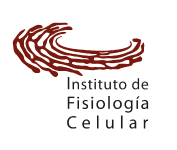Oogenesis and embryogenesis inhibition induced by two new ethyl-carbamates in the cattle tick Rhipicephalus microplus
Iturbe-Requena, S. L., Prado-Ochoa, M. G., Velázquez-Sánchez, A. M., García-Hernández, F., Cossío-Bayúgar, R., Muñoz-Guzmán, M. A., ? Alba-Hurtado, F. (2020). Oogenesis and embryogenesis inhibition induced by two new ethyl-carbamates in the cattle tick Rhipicephalus microplus. Ticks and Tick-Borne Diseases, 11(2), 101326. doi:10.1016/j.ttbdis.2019.101326
The purpose of this work was to contribute to the understanding of the mechanism of action of two new ixodicides. The histological and ultrastructural alterations of Rhipicephalus microplus oocytes (San Alfonso strain) treated with two new ethyl-carbamates (ethyl-4-bromophenyl carbamate and ethyl-4-chlorophenyl carbamate) by the adult immersion test were evaluated by light microscopy and transmission electron microscopy. The effects of the carbamates on embryogenesis in eggs were evaluated by fluorescence microscopy using DAPI staining. Both ethyl-carbamates inhibited the maturation of most oocytes and induced a concentration-dependent decrease (r = 0.5, p < 0.05) in the embryonation percentage in the small number of eggs oviposited by treated ticks. Evident ultrastructural alterations were observed in the oocytes from ticks exposed to the ethyl-carbamates, including modification of the chorion structure, myelinic bodies and autophagic vacuoles that were associated with degenerated organelles (mitochondria, endoplasmic reticulum and yolk granules), nucleolus fragmentation and chromatin clumping in germinal vesicles. In conclusion, these ethyl-carbamates affect the reproductive potential of R. microplus due to their negative effects on oogenesis and their repercussions for embryonic development.




